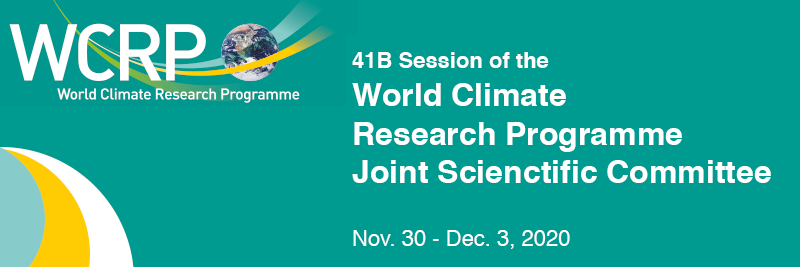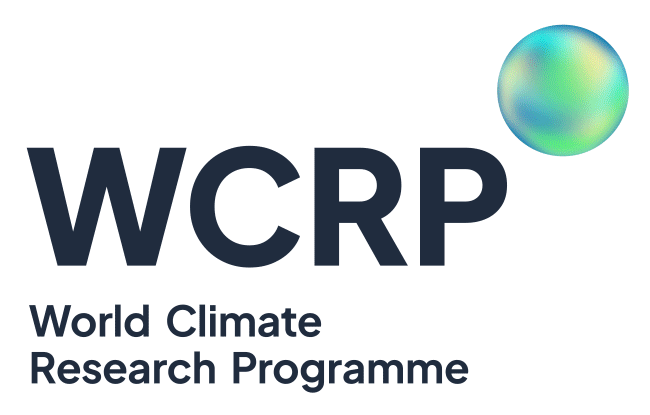An Extraordinary Session of the WCRP Joint Scientific Committee (JSC) is underway this week online. Beginning on Monday 30 November 2020, the Session will last 4 days, with three-hour sessions each day. The aim of the meeting is to make significant progress towards a “soft” implementation of a new WCRP structure and elements in support of the WCRP Strategic Plan 2019-2028.
Throughout the Session, strong engagement from the community and partners in the future direction of WCRP has been evident, building on four decades of climate research coordination and facilitation. At every session, rich and fruitful discussions have been taking place between participants, with 60-80 people joining each day despite the challenge of them connecting from almost every time zone in the world. This shows that the WCRP family and partners are very much engaged in the implementation of the WCRP strategy, and with the direction and initiatives of the new WCRP.
Background: The 'new' WCRP will soft launch in 2021. What can you expect?

Days One and Two - 30 November and 1 December 2020
After opening welcomes and an introduction session on day one, giving participants an overview of progress made since the last WCRP JSC Meeting in May 2020, the remainder of days one and two consisted of presentations from the four WCRP Core Projects and from those charged with leading the creation of two new WCRP 'Homes' — one on 'Earth System Modelling and Observational Capabilities' and one on 'Regional Climate Information for Societies'. Whether we call these six core communities 'Core Projects' or 'Homes' or something else was not decided, but it was evident that all six groups have done a great job of considering how they will structure their activities in the future.
VOTE: A new name for WCRP Core Projects?
Three themes emerged from across the presentations:
1. We need to foster enhanced cross-community communication - In order to achieve WCRP's Scientific Objectives, it will be very important for there to be strong integration across the Programme where it adds value. This is particularly the case for the two new 'Homes', as there are activities related to the themes of both homes that take place right across the Programme.
The proposed Lighthouse Activities are seen as key areas where community integration should take place, as this is where cross-community collaboration occurs. As such, the Lighthouses should be seen as truly cross-cutting and an integral part of all WCRP Core Projects/Homes. In addition to this, it was discussed that further measures should be introduced to encourage integration, including additional joint panels and projects, and several layers of communication tools that go beyond email to enable the sharing of information and collaboration throughout the community.
2. We need to increase diversity across the Programme - It was recognized in most of the presentations that the diversity of the WCRP community in terms of gender, geographic location and career stage must be improved. There have been some moves to do this over the last years, but the outcomes that we see today suggest that much more effort is needed. It was encouraging to see that plans to increase diversity were included in several of the presentations. The regional consultations that WCRP has initiated and that will produce a series of Climate Research Forums starting in 2021 should also work towards this effort.
3. COVID-19 has permanently changed our way of working - It was evident from several of the presentations that the COVID-19 epidemic has forever changed the way that WCRP will work. It was mentioned several times that it is unlikely that WCRP will go back to the number of face-to-face meetings that it had in the past, as the advantages of online meetings (inclusiveness, reduced carbon footprint, reduced time commitment, reduced expenses) have become very apparent. That isn't to say that all meetings should be held online, as it has been long recognized that certain events (workshops, summer schools, strategic planning meetings, some conferences, etc.) benefit greatly from face-to-face interactions.
This also means that we will need to face the challenges that a higher number of international online meetings have brought us. Zoom fatigue and sleep issues due to meetings held in the middle of the night are now very real problems for scientists and support staff working internationally. We need to find ways that people can engage without the expectation that they will be connected to their computers 24/7.
Day Three - 2 December 2020
Day three of the Extraordinary Session of the WCRP Joint Scientific Committee highlighted the science plans of five new Lighthouse Activities. These are high-visibility, cross-cutting activities, which are aimed at meeting the Vision, Mission, and Scientific Objectives of the Programme for the benefit of society. They are:

Background: Lighthouse Activities
Excitement and enthusiasm for the Lighthouse Activities were evident during the presentations, subsequent discussions, and by the fact that these activities drew the largest audience of the meeting so far.
The themes of improving diversity, this time of some of the Lighthouse Activity Science Plan Development Teams, and the need for community integration were again central. It was highlighted that while there needs to be communication between all Lighthouse Activities and between the Lighthouse Activities and the Core Projects/Homes, there is also an opportunity to learn from the sunsetting WCRP Grand Challenges. While the Lighthouses are much higher-level, integrative, and strategic activities, lessons learned from the Grand Challenge experience could be useful to the development of the Lighthouse Activities and there is also the possibility of transferring across expertise in some areas.
There were several other themes specific to the Lighthouse Activities:
1. The Lighthouse Activities should not be too broad - as the Lighthouse Activities are still in the early planning phase, they have not yet had the opportunity to focus their scope. It was noted by a number of participants that the Lighthouse Activities need to focus on activities within their scope that: (1) require international coordination; (2) are not being addressed adequately elsewhere; and (3) that can make an important contribution to climate science or to the links between climate science and society.
2. The Lighthouse Activities should engage external partners early - the benefits of engaging partners early in a co-design process was mentioned several times. We need to think about how to establish an effective process so that partners have a clear entry point to the activities and so that the Science Plan Development Teams are able to co-design their plans with a wide range of partners, while maintaining a smaller core science plan writing team. Several of the Lighthouse Activities are planning to have a number of Working Groups and this may be an effective place for co-design to take place.
3. The Lighthouses are places where we can work very hard on fostering the next generation of climate scientists and leaders - most of the Lighthouse Activities have early career researchers on their science plan development teams, but they are also where we can ambitiously push the frontiers of all aspects of how we work, including the technology and research frameworks we use. This relies on the involvement of early to mid-career researchers, as they are naturally at that frontier. We also heard from the WCRP Academy Lighthouse Activity that it will focus on facilitating climate science training, including the skills needed at all career stages and that could, as advocated by Gaby Langendijk from the Young Earth System Scientists (YESS) community, foster the development of thought leaders of the next generation who work in a much more transdisciplinary way.
Day Four - 3 December 2020
The last day of the Extraordinary Joint Scientific Committee (JSC) Session was about drawing everything together to forge the way forward. While many uncertainties remain, including about how to tackle governance, communicate and collaborate throughout the Programme and with partners, ensure that the 'W' in World Climate Research Programme means what it says, and make sure that adequate resources are available, the community agreed in principle to a soft transition to the proposed new structure in early 2021.
The next steps will be for the Joint Scientific Committee to formally decide on the soft transition to take place now and discuss the mechanisms by which it can be delivered. There were many excellent suggestions provided by the community, which will be taken into a Joint Scientific Committee meeting on 9 December 2020.
We wish to thank everyone who attended the Extraordinary Session of the JSC for your excellent contributions to this meeting. We wish you good health and all the best for the holiday season.

